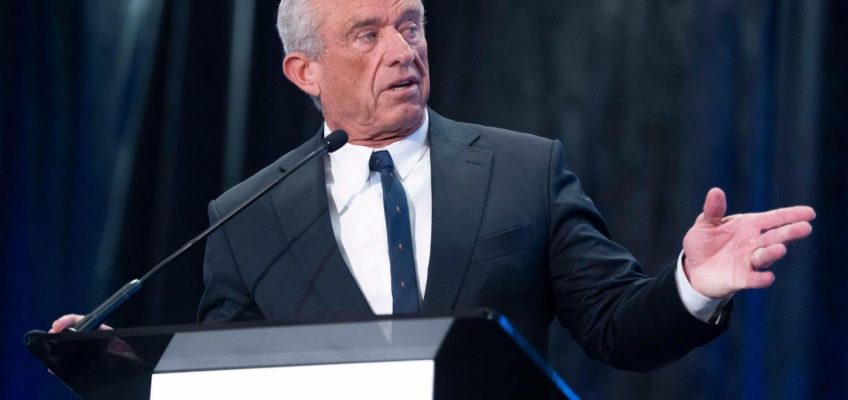By RONALD BLUM, Associated Press
WASHINGTON (AP) — FIFA has invited more teams than ever for a World Cup priced largely for fans in the 1%. The process of figuring out which teams in the expanded 48-nation field will play where begins with Friday’s draw at the Kennedy Center for the Performing Arts.
Cape Verde, Curaçao, Jordan and Uzbekistan will appear in soccer’s premier event for the first time when next year’s tournament is played from June 11 to July 19 at 16 sites in the United States, Mexico and Canada.
“I’m quite optimistic because to qualify you need to beat the other teams of your confederations, and that’s a sign of quality,” former Arsenal manager Arsene Wenger said Thursday as red carpets were installed at the Kennedy Center. “The teams are not there by coincidence.”
The red carpet is delivered prior to the final draw for the 2026 soccer World Cup at the Kennedy Center in Washington, Thursday, Dec. 4, 2025. (AP Photo/Chris Carlson)
President Donald Trump of the U.S. and Claudia Sheinbaum of Mexico are expected along with Canada Prime Minister Mark Carney. Instead of soccer gear, the Kennedy Center gift shop still was filled with socks of Shakespeare, Beethoven and Verdi along with shelves of red and white holiday nutcrackers.
The world’s top 11-ranked teams have all qualified, with No. 12 Italy among 22 nations competing in playoffs for the final six berths to be decided March 31.
Led by captain Lionel Messi, who turns 39 during the tournament, Argentina seeks to become the first nation to win consecutive World Cups since Brazil in 1958 and 1962. Messi will look to extend his record of 26 games played and enters with 13 career goals, three shy of Miroslav Klose’s record.
Games will be played at 11 NFL stadiums along with three in Mexico and two in Canada, where construction is underway to add 17,000 temporary seats to BMO Field, raising capacity to around 45,000. Attendance will top the record 3.59 million in 1994.
“We basically set the new tone in terms of attendance, in terms of surrounding the tournament with a lot of entertainment and glamor,” said Alan Rothenberg, head organizer of the 1994 World Cup in the U.S. “We did a lot of things that kind of broke the ice with respect to how you present the tournament as something other than just a soccer tournament.”
The red carpet is delivered prior to the final draw for the 2026 soccer World Cup at the Kennedy Center in Washington, Thursday, Dec. 4, 2025. (AP Photo/Chris Carlson)
FIFA announced initial ticket prices of $60-$6,730, saying they would be dynamic, up from $25-$475 for the 1994 tournament in the United States. It has refused to release a complete list of prices, as it had for every other World Cup since at least 1990. The governing body also is selling parking passes for up to $175 for a single match, a semifinal in Arlington, Texas.
FIFA spokesman Bryan Swanson did not respond to a request for FIFA President Gianni Infantino to discuss ticket prices.
Sixty-four nations will participate in the draw, 30% of FIFA’s members, but just 42 countries are assured of sports. Among the playoff teams, Albania, Kosovo, New Caledonia and Suriname are trying to reach the World Cup for the first time.
With the expansion, the top two teams in each of 12 groups advance along with the eight best third-place teams. Some nations could reach the new round of 32 with three points.
“I think we’re going to be in pretty good shape,” said former U.S. midfielder Tab Ramos, who during his playing days mapped out permutations for advancement. “We have a good team, so I’m not worried as much as I’ve been in the past about about this draw.”
Opta Analyst’s computer projects the U.S. has a 0.9% chance of winning — the Americans haven’t reached the semifinals since the first World Cup in 1930. Spain tops the forecast at 17%, followed by France (14.1%), England (11.8%), Argentina (8.7%), Germany (7.1.%), Portugal (6.6%), Brazil (5.6%) and the Netherlands (5.2%).
In a new twist, FIFA said the top four teams in the rankings — Spain, Argentina, France and England — will avoid each other until the semifinals if they finish first in their first-round groups.
Related Articles
How to watch the 2026 World Cup draw
FIFA considered Vegas for World Cup draw but logistical issues helped send it to Washington instead
Trump’s immigration message is colliding with his welcome to World Cup fans
The World Cup draw is usually a spectacle. This time, FIFA hopes bigger is better
World Cup draw explained: Everything you need to know about the big event
Specific sites for most matchups and kickoff times won’t be announced until Saturday. In 1994, there were just seven night games.
A team’s group play sites will be restricted to an Eastern, Central and Western regional
The 1994 World Cup draw in Las Vegas was apolitical, featuring performances by Stevie Wonder, Barry Manilow, James Brown and Vanessa Williams plus comedian Robin Williams, who called the draw screen “the world’s largest keno board,” yelled “Bingo!” when Greece was selected.
This draw figures to be more akin to the ceremony for 2018 tournament in Moscow, opened by Russian President Vladimir Putin. Trump, who has campaigned for a Nobel Peace Prize, is expected to be awarded FIFA’s own peace prize that Infantino established after traveling to several events with Trump.
But the main event is the pulling of balls from bowls to create groups. Retired tars Tom Brady of the NFL, Shaquille O’Neal of the NBA and Wayne Gretzky of the NHL along with three-time AL MVP Aaron Judge will assist in a ceremony to be run by former England captain Rio Ferdinand.
“There is the angst and the looks of sheer terror and disappointment and/or joy and elation from the coaches and from the staffs,” said former U.S. defender Alexi Lalas, now Fox’s lead soccer analyst. “It really gets kind of real for people.”




